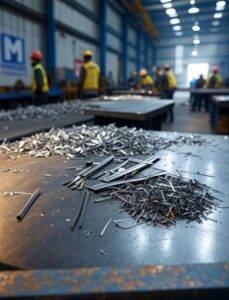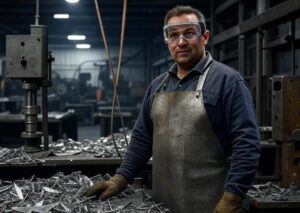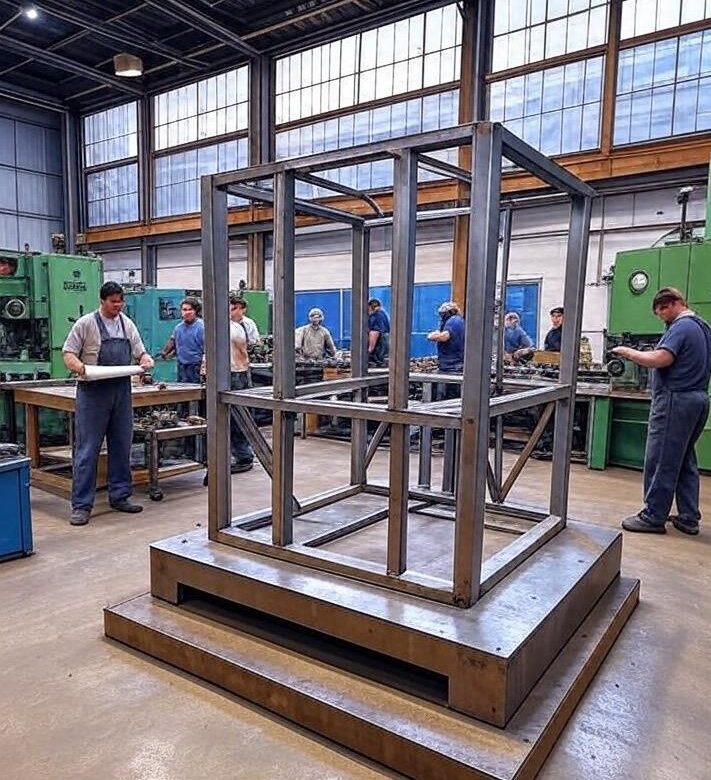Hidden Costs in Metal Fabrication Projects — And How to Avoid Them
In the world of metal fabrication, precision, timing, and budgeting can make or break a project. Yet, even the most experienced engineers and project managers sometimes face unexpected challenges — those sneaky hidden costs in metal fabrication that quietly inflate budgets and delay timelines. Imagine planning a large-scale industrial structure, only to discover that overlooked expenses in materials handling, rework, or compliance can drain your resources and threaten the project’s success.
At Morshedi Building Metal Products Manufacturing LLC, we understand the pain points our clients face. With over 20 years of industry experience and a reputation for excellence across the GCC region, we know that managing costs effectively is as important as quality and innovation. This article dives deep into the common hidden costs lurking in metal fabrication projects and provides actionable strategies to help you avoid these pitfalls — saving time, money, and headaches.
If you’re ready to uncover the unseen expenses that could impact your next project and learn how to tackle them head-on, read on.
Complementary Insight: Ensuring On-Time Delivery Alongside Cost Control
Managing hidden costs in metal fabrication is only one piece of the puzzle. Ensuring reliable, on-time delivery is equally crucial to keep your projects on track and within budget.
Check out our detailed guide on 5 Ways to Ensure Reliable On-Time Delivery Metal Fabrication to discover practical tips that complement cost control strategies — all backed by Morshedi’s 20+ years of expertise in the GCC region.

Identifying and Categorizing Common Hidden Costs in Metal Fabrication
In metal fabrication projects, hidden costs can arise from various sources that are often overlooked during initial planning. Recognizing these costs early helps prevent budget overruns and project delays. Below are the most common hidden costs encountered in metal fabrication:
-
Material Waste: Excess scrap, offcuts, or damage during handling that is not accounted for in the initial budget.
-
Rework and Repairs: Corrections due to errors in fabrication, design changes, or quality issues requiring additional labor and materials.
-
Design Modifications: Late-stage changes in design specifications that affect material requirements and processing time.
-
Compliance and Certification Costs: Expenses related to meeting industry standards and safety certifications, sometimes underestimated.
-
Logistics and Handling: Unexpected costs from transportation, storage, or special handling of materials and finished products.
-
Downtime and Delays: Costs caused by equipment breakdowns, supplier delays, or workforce availability issues.
-
Inspection and Testing: Additional quality control measures that may not be budgeted initially but are critical to project success.
Common Hidden Costs in Metal Fabrication Projects
| Hidden Cost Category | Description | Typical Impact on Project | Prevention Tips |
|---|---|---|---|
| Material Waste | Scrap and damage during handling and processing | Increases material expenses | Optimize cutting plans, proper training |
| Rework and Repairs | Fixing fabrication errors or design changes | Adds labor and material costs | Early design validation, quality control |
| Design Modifications | Changes after production starts | Causes delays and increased resource use | Finalize designs early, clear communication |
| Compliance and Certification | Costs of adhering to standards and certifications | Unexpected fees and testing | Plan for certifications in budget |
| Logistics and Handling | Transport, storage, and special handling costs | Increases overhead expenses | Efficient logistics planning |
| Downtime and Delays | Equipment failure, supplier or workforce unavailability | Extends project timelines | Preventive maintenance, reliable suppliers |
| Inspection and Testing | Additional quality checks not planned | Adds time and cost | Include testing in project schedule |
How Hidden Costs Impact Project Budget and Timeline
Hidden costs in metal fabrication projects do more than just increase expenses; they can severely disrupt project schedules and overall success. Even a small unforeseen expense, when multiplied across various stages of fabrication, leads to significant budget overruns and delays.
-
Financial Impact:
Studies show that hidden costs can add between 10% to 30% to the total project budget if not managed properly. For example, unplanned material waste and rework often require additional purchases and labor hours, driving costs up unexpectedly.
-
Time Delays:
Delays caused by rework, equipment downtime, or last-minute design changes can push a project’s completion date weeks or even months beyond the original plan. This not only increases direct costs but also indirect costs such as labor idle time and penalties for late delivery.
Example:
A recent industrial project in the GCC region experienced a 15% budget increase due to hidden rework and logistics expenses. The project manager emphasized,
“Without early detection and control of these hidden costs, our timelines would have slipped by months.” — Project Manager, GCC Industrial Fabrication
Addressing hidden costs proactively reduces risk and ensures projects meet quality, cost, and schedule targets.

Practical Strategies to Identify and Minimize Hidden Costs in Metal Fabrication
Effectively managing hidden costs in metal fabrication requires proactive strategies that cover the entire project lifecycle. Here are some proven methods to help identify and reduce these expenses:
-
Comprehensive Project Planning:
Early-stage planning with detailed material estimates and process workflows reduces the risk of unexpected costs. Involving all stakeholders ensures design and production align with budget and timeline expectations. -
Advanced Software Tools:
Using project management and CAD/CAM software improves accuracy in design, material usage, and scheduling. These tools help anticipate potential problem areas and optimize resource allocation. -
Employee Training and Skill Development:
Skilled workers are less likely to make errors that lead to rework or waste. Regular training keeps the team updated on best practices and new technologies. -
Quality Control and Inspection:
Implementing strict quality assurance measures throughout the fabrication process minimizes defects that cause costly corrections. -
Supplier and Logistics Management:
Establishing reliable supplier relationships and efficient logistics planning helps avoid delays and unexpected handling costs.
By adopting these strategies, companies can significantly reduce hidden costs and improve project profitability.
Emerging Technologies and Their Role in Reducing Hidden Costs in Metal Fabrication
Modern technologies such as automation, robotics, artificial intelligence (AI), and advanced software have transformed metal fabrication by improving precision, efficiency, and cost control.
-
Automation and Robotics: Automated machinery reduces human error, minimizes rework, and speeds up production processes.
-
Artificial Intelligence: AI-driven predictive maintenance helps prevent equipment downtime, reducing costly delays.
-
Advanced Software: Integrated CAD/CAM and project management tools optimize material usage and scheduling, lowering waste and unexpected expenses.
These technologies not only reduce the likelihood of hidden costs but also enhance overall project quality and delivery times.
Impact of Emerging Technologies on Hidden Costs in Metal Fabrication
| Technology | Hidden Cost Addressed | Benefits | Example Application |
|---|---|---|---|
| Automation & Robotics | Rework, Labor Costs | Higher precision, faster production | Robotic welding and cutting systems |
| Artificial Intelligence | Downtime, Maintenance Costs | Predictive maintenance, early fault detection | AI sensors monitoring machine health |
| Advanced Software | Material Waste, Scheduling | Optimized cutting paths, real-time tracking | CAD/CAM software integration with ERP systems |
“Integrating automation and AI in metal fabrication processes significantly reduces hidden costs by minimizing errors and unplanned downtime.”
— John Smith, Industry Analyst, Metal Fabrication Journal (2023)
Source: Metal Fabrication Journal, 2023
Conclusion and Key Takeaways
Hidden costs in metal fabrication projects often go unnoticed until they significantly impact budgets and timelines. By identifying common sources such as material waste, rework, design changes, compliance, logistics, downtime, and inspection, professionals can better prepare and manage their projects effectively.
Implementing practical strategies like comprehensive planning, advanced software, skilled workforce training, rigorous quality control, and reliable supplier management can dramatically reduce these hidden expenses. Moreover, embracing emerging technologies such as automation and AI further minimizes risks and enhances project efficiency.
At Morshedi Building Metal Products Manufacturing LLC, we combine over two decades of experience with innovative solutions to help you keep your metal fabrication projects on track and within budget. Understanding and controlling hidden costs is essential to delivering superior quality results on time.
Take control of your projects today by proactively addressing hidden costs — because every saved dollar and hour brings you closer to success.
Ready to eliminate hidden costs and boost the performance of your next metal fabrication project?
Morshedi Building Metal Products Manufacturing LLC is here to help. With 20+ years of hands-on experience and cutting-edge technologies, we deliver precision, reliability, and value — every time.
👉 Learn more about who we are
👉 Explore our full range of services
Don’t let hidden costs slow you down. Partner with Morshedi — where excellence in metal fabrication meets transparency and trust.

